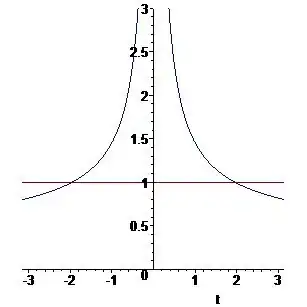In the answering of another question in MSE I've dealt with the iteration of $x=b^x$ where the base $b=i$. If I reversed that iteration $x=log(x)/log(i)$ then I run into a cycle of 3 periodic fixpoints. Another complex base on the unit circle however, $b = \sqrt{0.5}(1+i)$ gives only one fixpoint. I asked myself, whether there is a point on the complex unit circle between that values, where the "switching" occurs, but could not recognize a meaningful interpretation. By binary search I narrowed the range to the following boundaries.
Let $\varphi_1=0.345008597051431179704966664178 $ and $b_1=\exp(\pi i \varphi_1) $ and
Let $\varphi_2= 0.345008597051431179704966665794$ and $b_2=\exp(\pi i \varphi_2) $
such that the bases $b_1,b_2$ lay on the complex unit circle.
Then consider the iteration to the fixpoint beginning at some arbitrary $x_0$ in the near of the guessed fixpoint, say $ x_0=1+I$, and iterate $ x_k= \log(x_{k-1})/\log(b_1) $. We shall approximate one fixpoint.
Now we use the other base $b_2$, begin again at $ x_0=1+I$, and iterate $ x_k= \log(x_{k-1})/\log(b_2) $. We get a 3-periodic cycle of fixpoints, one of them very near at $ t_\infty \sim - \pi/2 + \delta i $ where $ \delta$ goes to zero if we let go $\varphi_2 $into the direction of $ \varphi_1$.
Q1: What is the exact/symbolic value of $\varphi_x$ where the splitting from one into three fixpoints occurs? Wolfram-alpha and Ries at Robert Munafo's site were not helpful so far...
Q2: And what happens at that base? Do we see a fixpoint-cycle or one single fixpoint?

